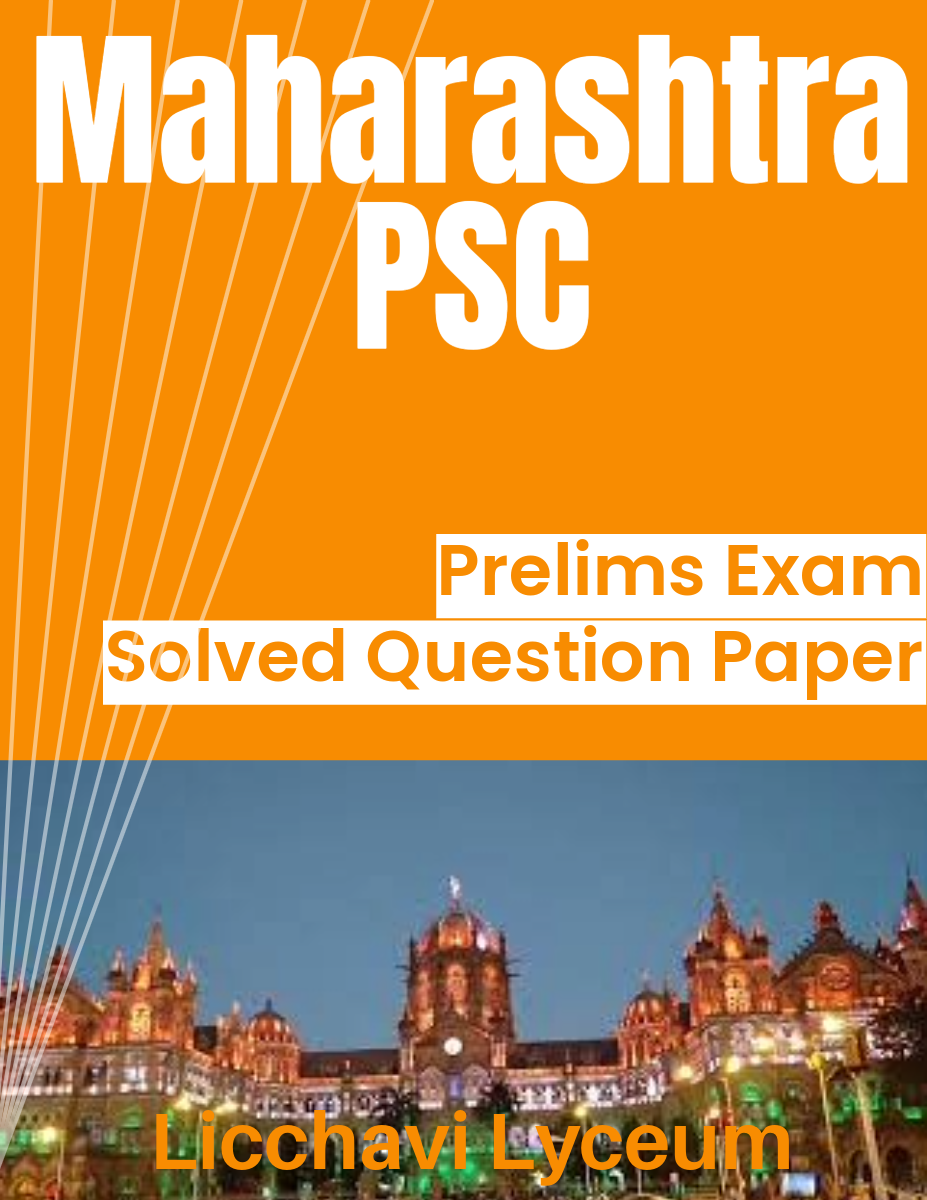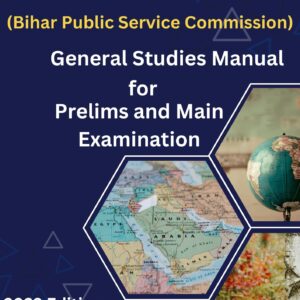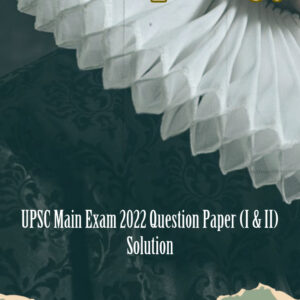1. In _______ however, the Iron Age immediately succeeded the Stone Age, and we find no traces of the intermediate Copper Age
(1) Northern India
(2) Western India
(3) Southern India
(4) Eastern India
Answer: (1) Northern India
Explanation: In Northern India, the Iron Age immediately succeeded the Stone Age, and there are no traces of the intermediate Copper Age.
2. Which newspaper gave an advertisement for the post of editor with the payment of Two dry breads (rotis), a glass of water and ten years imprisonment for each editorial?
(1) Kesari
(2) Swarajya
(3) Vande Mataram
(4) Kaal
Answer: (1) Kesari
Explanation: Kesari newspaper gave an advertisement for the post of editor with the payment of two dry breads (rotis), a glass of water, and ten years imprisonment for each editorial.
3. Who compared the relationship between Mumbai and Maharashtra to that of wings to the eagle and claws to the Tiger?
(1) Amar Sheikh
(2) Annabhau Sathe
(3) P.K. Atre
(4) D.N. Gavhankar
Answer: (3) P.K. Atre
Explanation: P.K. Atre compared the relationship between Mumbai and Maharashtra to that of wings to the eagle and claws to the tiger.
4. Identify the person from the description given below: Gangadhar Gadgil, the scholar of Economics considered him as ‘The Architect of Modern India’. The economic nationalism of Dadabhai Naoroji and Justice Ranade was based on his thoughts. He had realized the importance of agriculture in Indian life.
(1) Nana Shankar Sheth
(2) Dr. Bhau Daji Lad
(3) Bhaskar Tarkhadkar
(4) Dadoba Pandurang
Answer: (1) Nana Shankar Sheth
Explanation: Nana Shankar Sheth, also known as ‘The Architect of Modern India’, influenced the economic nationalism of Dadabhai Naoroji and Justice Ranade and recognized the importance of agriculture in Indian life.
5. Name the person described in the statements given below: a. He was totally a pro-Mahavidharbha person. b. He did not agree with Dhananjayarao’s idea of conferring the status of sub-province to Mahavidharbha. c. He always felt that Mahavidharbha should be a separate State.
(1) Barrister Ramrao Deshmukh
(2) G.T. Madkhalkar
(3) Dr. Makundras Jaykar
(4) Bapuji Aney
Answer: (4) Bapuji Aney
Explanation: Bapuji Aney was a strong advocate for a separate Mahavidharbha state and did not agree with the idea of conferring sub-province status.
6. Within ten days of the festival held at Poona, Mr. Rand, the Collector of Poona, and another officer were shot dead while returning from the Government House.
(1) Shivaji
(2) Ganapati
(3) Durga
(4) Navratri
Answer: (2) Ganapati
Explanation: The festival held at Poona referred to here is the Ganapati festival.
7. The young Bengalis were familiar with ‘Young Italy.’ They came to know about ‘Young Italy’ through the speeches of
(1) Surendranath Banerjee
(2) Rabindranath Tagore
(3) Swami Vivekananda
(4) Raja Ram Mohan Roy
Answer: (3) Swami Vivekananda
Explanation: The young Bengalis learned about ‘Young Italy’ through the speeches of Swami Vivekananda.
8. Which Commission has stated that the University degree need not be essential for the administrative services?
(1) Dr. Radhakrishna Commission
(2) Kothari Commission
(3) Hunter Commission
(4) None of the above
Answer: (1) Dr. Radhakrishna Commission
Explanation: The Dr. Radhakrishna Commission stated that a university degree need not be essential for administrative services.
9. In ancient times, Indians had imitated the Greek coins because
(1) a and b are correct but c and d are incorrect
(2) a and b are incorrect but c and d are correct
(3) All the four causes are incorrect
(4) All the four causes are correct
Answer: (4) All the four causes are correct
Explanation: Indians imitated Greek coins for various reasons mentioned in options a, b, c, and d.
10. Who used the word “Pakistan” for the first time?
(1) Barrister Jinnah
(2) Sir Syed Ahmed
(3) Muhammad Iqbal
(4) Rehmat Khan
Answer: (3) Muhammad Iqbal
Explanation: Muhammad Iqbal is credited with using the word “Pakistan” for the first time.
11. As the news of Alexander’s death at Babylon, in 323 BC, came, it roused the people against the foreign invader.
(1) Chandragupta, Chanakya
(2) Ashoka, Bindumara
(3) Chandragupta Bimbinara
(4) Ashoka, Radhagupta
Answer: (1) Chandragupta, Chanakya
Explanation: The news of Alexander’s death led Chandragupta and his mentor Chanakya to act against the foreign invader.
12. Who is described in the following statement? He was originally a slave of Turkestan. In his childhood, he was brought by a merchant to Nishapur, where Qazi Fakhruddin Abdul Aziz Kufi purchased him. The Qazi’s son sold him to a merchant who in turn sold him to Muhammad of Ghur.
(1) Qutub-ud-din Aibak
(2) Balban
(3) Ikhtiyar-ud-din Muhammad
(4) Iltutmish
Answer: (4) Iltutmish
Explanation: The description matches Iltutmish, who was originally a slave and later became a prominent ruler in Delhi.
13. The watchword of the first generation of English educated Bengalis was
(1) Nationalism
(2) Rationalism
(3) Westernization
(4) None of the above
Answer: (2) Rationalism
Explanation: The first generation of English educated Bengalis emphasized rationalism.
14. Match the following:
a. Alawal was the author of several poems on Vaishnava subjects.
b. Abdullah Khan observed Holi festival.
c. Mir Jafar on his death bed drank a few drops of water poured in libation over the idol of Kiriteswari near Murshidabad.
d. Daulat Rao Scindia joined Moharram processions in green dress.
(1) I III II IV
(2) I II III IV
(3) II IV I III
(4) III I II IV
Answer: (1) I III II IV
Explanation: The matching descriptions are as follows: Alawal – Author of Vaishnava poems, Abdullah Khan – Observed Holi, Mir Jafar – Drank water over Kiriteswari idol, Daulat Rao Scindia – Joined Moharram in green dress.
15. Pick out the odd persons from the following:
a. Chanakya
b. Vishnugupta
c. Ramgupta
d. Kautilya
e. Vishnu Sharma
f. Pakshin Swami
Answer: (4) c and e only
Explanation: Chanakya, Vishnugupta, Kautilya, Vishnu Sharma, and Pakshin Swami are associated with historical or scholarly roles, while Ramgupta is not typically associated with them.
16. Which of the following statements are true?
Recent studies have shown that convergence of the Indian plate and Asian plate has caused a crustal shortening of about 500 km in the Himalayan region.
There has also been seafloor spreading along the oceanic ridge in the Indian Ocean.
Answer: (1) a and b are correct
Explanation: Both statements a and b are true.
17. Which of the following statements is/are true regarding irrigation in India?
(a) Firoz Shah Tughing constructed Sudarshan Lake.
(b) Punnya Gupta constructed Western Yamuna Canal.
(1) Statement a only.
(2) Statement b only
(3) Statements a and b
(4) None
Answer: (3) Statements a and b
Explanation: Both statements a and b are true.
18. Which of the following two statements is/are correct?
a. Magnetic Resonance Imaging (MRI) generates thin section images of any part of the human body.
b. CT Scan is superior to X-rays and MRI.
(1) Statement a only.
(2) Statement b only
(3) Statements a and b
(4) None
Answer: (1) Only a
Explanation: Statement a is correct, but statement b is not.
19. Read the following statements and choose the correct option given below:
a. El-Nino is merely an extension of the warm equatorial current.
b. El-Nino means “Child Christ”. El-Nino is a current that appears around Christmas in December.
d. El-Nino is used in India for forecasting long-range monsoon rainfall.
(1) Statement a only.
(2) Statement b only
(3) Statements a and b
(4) None
Answer: (4) All statements are correct
Explanation: All the given statements are correct.
20. Arrange the following peaks in the descending order of their heights:
a. Nanda Devi
b. Kanchenjunga
c. Gangotri
d. Badrinath
D. Nanga Parbat
Answer: (3) b e a d c
Explanation: The peaks in descending order of their heights are: Kanchenjunga, Nanda Devi, Badrinath, Gangotri, Nanga Parbat.
21. Which community group is known as ‘Achua’?
(1) Bushmen
(2) Pygmies
(3) Eskimos
(4) Nagas
Answer: (2) Pygmies
Explanation: The community group known as ‘Achua’ refers to Pygmies.
22. The creator of ‘Common man’ – R.K. Laxman made readers smile every morning. ‘The ‘common man’: he created
(1) Was bespectacled and wore a check jacket
(2) Was bald and wore shorts
(3) Has a fancy hair-style still wore a dhoti
(4) Was clean-shaven and properly dressed
Answer: (3) Has a fancy hair-style still wore a dhoti
Explanation: R.K. Laxman’s ‘Common man’ had a fancy hair-style but still wore a dhoti.
23. Test matches sometimes tend to be boring and monotonous with one team generally batting for more than a day. However, India was dismissed twice in a day of a test match in 1952? Against whom were we playing?
(1) England
(2) Australia
(3) West Indies
(4) New Zealand
Answer: (2) Australia
Explanation: India was dismissed twice in a day of a test match against Australia in 1952.
24. Identify the river from the following description:
This river originates near Guria Mandista Peak south of Monarent w Karnali in Western Nepal e Sanda, Sarand Hapti are in tributaries d. joins the ganga near chapra in Bihar
(1) Ghaghra
(2) Gandak
(3) Gomati
(4) Kali
Answer: (2) Gandak
Explanation: The river described is the Gandak River.
25. A small hydroelectric plan (130 kW) r hydroelectric power development in India
(1) Darjeeling (West Bengal) in 1897
(2) Rawtbhatta (Rajasthan) in 1896
(3) Kakrapara (Gujarat) in 1809
(4) Narora (Uttar Pradesh) in 1839
Answer: (1) Darjeeling (West Bengal) in 1897
Explanation: A small hydroelectric plant (130 kW) was established in Darjeeling (West Bengal) in 1897, marking early hydroelectric power development in India.



